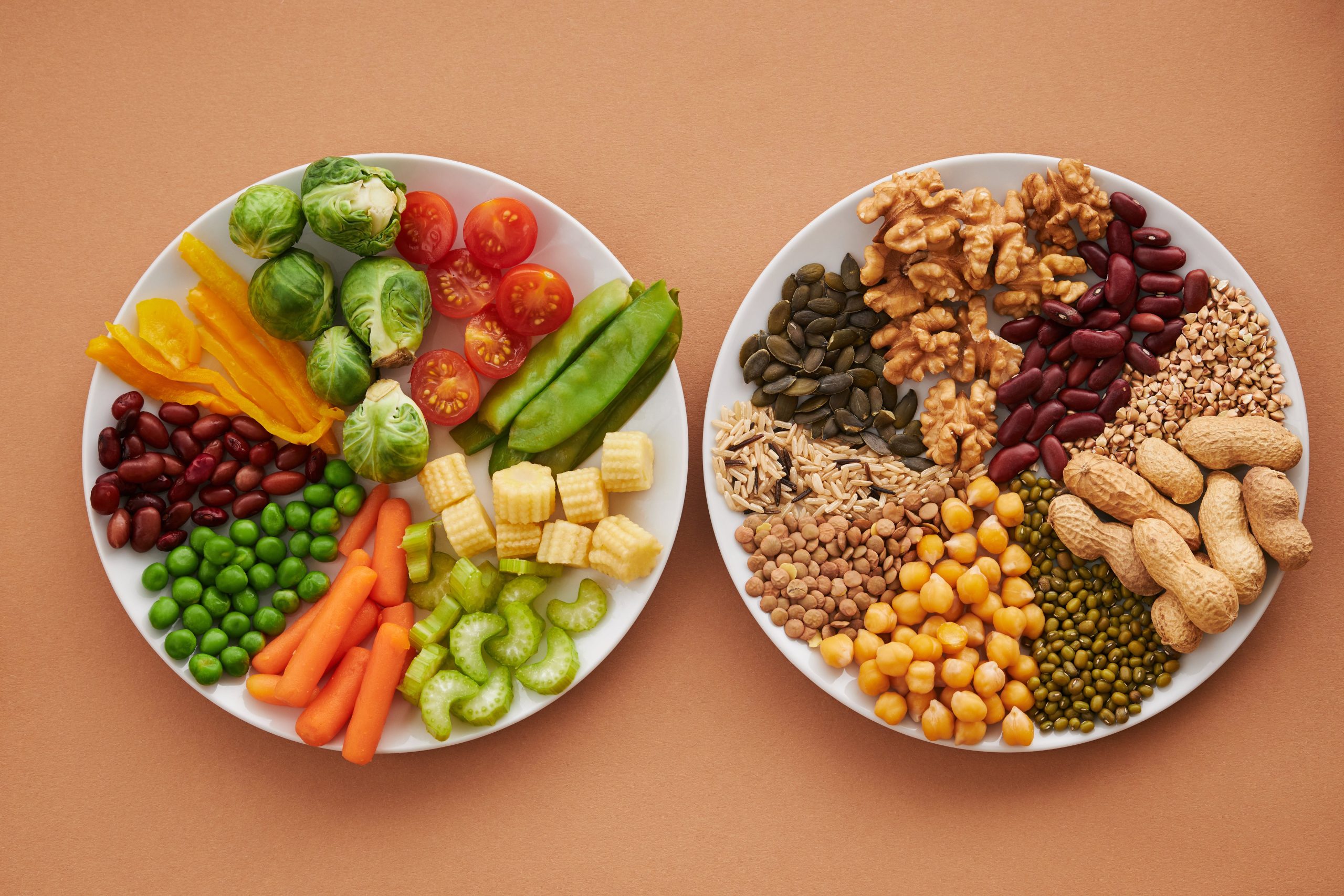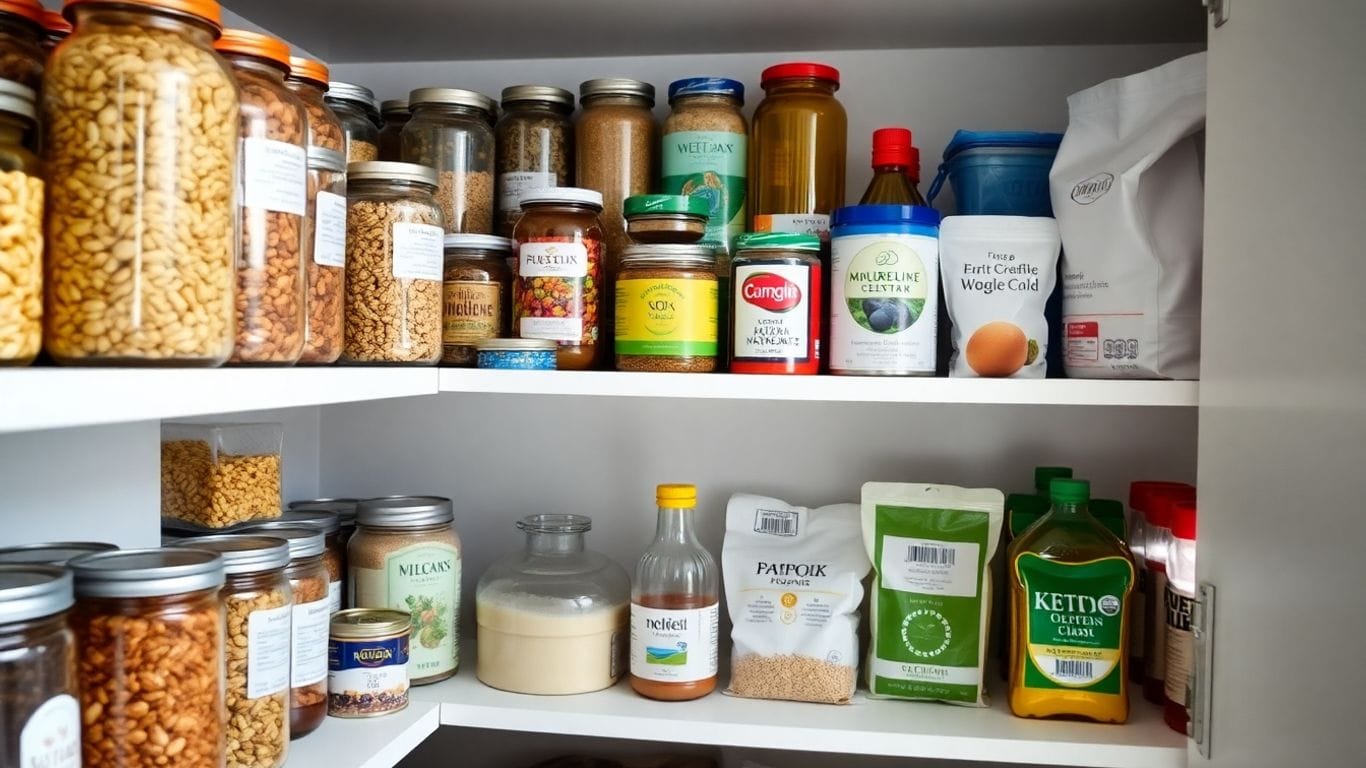Table of contents
- Quick definition & types (what low-carb means)
- How low-carb works (plain science)
- Evidence: weight loss and metabolic effects
- Who may benefit — and who should be careful
- Risks, side effects and what to monitor
- How to start — step-by-step plan (practical)
- Food lists & smart swaps (what to eat / avoid)
- FAQ (short, direct answers)
- Conclusion + next steps
Quick definition & types (what “low-carb” means)
A low-carb diet reduces the amount of carbohydrates you eat—usually by replacing starchy, sugary foods with vegetables, protein and healthy fats. There is no single official cutoff, but common definitions used in clinical guidance place low-carb at less than ~130 grams of carbs per day, with very low-carb / ketogenic plans commonly under 50 grams per day.
Common categories
- Moderate low-carb: ~100–130 g carbs/day — practical, easier to sustain.
- Low-carb: ~50–100 g carbs/day — stronger effects on blood sugar and weight for many people.
- Very low-carb / ketogenic: ≤50 g carbs/day, designed to trigger nutritional ketosis (body makes ketones). This has different metabolic effects and clinical considerations. (The Nutrition Source)
Why definitions vary: Clinical studies and guidelines use different cutoffs (percent of calories vs absolute grams), so authors and doctors often define “low-carb” differently. That’s normal—focus on outcomes and tolerability rather than a single number.
How low-carb works — the simple science (plain language)
- Fewer carbs → lower blood glucose spikes. Carbohydrates break down into glucose, and less dietary carb typically means smaller post-meal blood sugar rises.
- Lower insulin response. With less glucose influx, the body often produces less insulin. Lower insulin can change how your body stores and releases fat.
- More satiety from protein and fat. Many people feel fuller on meals higher in protein/fat, which often leads to reduced calorie intake without consciously “counting calories.”
- When carbs are very low (keto), the liver makes ketones. Ketones become an alternative fuel, and some people see faster short-term weight loss and improved blood sugar control. But ketosis brings unique side effects and long-term unknowns.
Evidence snapshot: weight, blood sugar, lipids (what research says)
Weight loss
- Short to medium term (up to ~1 year): Low-carb diets often produce equal or somewhat greater weight loss than low-fat diets in randomized trials, especially in the first 3–12 months. Several meta-analyses support this short-term advantage.
- Long term (beyond 1 year): Differences mostly shrink; adherence and overall calorie balance become key. Some long-term studies show similar weight loss across sustainable diets.
Blood sugar and diabetes
- Low-carb approaches reliably lower post-meal blood glucose and can improve HbA1c (a marker of average blood sugar) in people with type 2 diabetes—sometimes dramatically—especially when paired with medication adjustments and clinical supervision. Major diabetes guidance recognizes carbohydrate lowering as a tool but recommends individualization and monitoring.
Lipids & cardiovascular markers
- Triglycerides typically improve on low-carb diets.
- HDL (the “good” cholesterol) often increases.
- LDL (the “bad” cholesterol) can increase in some people on low-carb, especially if saturated fat intake is high; this requires monitoring and may influence long-term risk decisions. Balance and food quality matter.
Low-carb is an effective short-term weight and glycemic management tool for many people, but benefits and risks depend on food quality, individual biology, and how well you sustain the plan.
Who may benefit — and who should be careful
Likely to benefit
- People with overweight or obesity seeking clinically meaningful weight loss.
- People with type 2 diabetes or prediabetes who want to improve blood sugar control (under clinical supervision, especially if on glucose-lowering meds).
- Individuals who feel more satisfied eating lower carb and are more likely to stick with that pattern long term.
Be cautious / consult first
- People on insulin or sulfonylureas (risk of hypoglycemia) — medication adjustments are often needed.
- Pregnant or breastfeeding people. Safety and needs differ—don’t start an aggressive low-carb plan without medical advice.
- People with a history of eating disorders or those who find dietary restriction triggers unhealthy behaviors.
Risks, side effects and what to monitor
Common early effects
- “Keto flu” (fatigue, dizziness, headaches, irritability) during the first days as your body adapts—usually transient and eased by hydration, salt/electrolytes, and gradual carb reductions. (The Nutrition Source)
Nutritional concerns
- Lower fiber intake if you cut out whole grains and many fruits; focus on non-starchy vegetables and nuts to preserve fiber.
- Micronutrient gaps (vitamins, minerals) possible if food variety is poor—consider a multivitamin only if recommended by a clinician.
Cardiometabolic monitoring
- Track lipid profile (LDL, HDL, TG) periodically, especially if you increase saturated fat. Some people see LDL rise and may need to adjust dietary fat quality or medications.
Athletic performance
- High-intensity performance can suffer initially on very low-carb diets; endurance athletes sometimes adapt well, but adjustments are needed. Monitor energy, recovery and training quality.
How to start — a practical, clinician-friendly 4-week plan
Important: If you have diabetes, take medications, are pregnant, or have major health conditions, consult your healthcare team before changing carbs.
Week 0 — Prep & baseline
- Get baseline labs if possible: fasting glucose/HbA1c, lipid panel, basic metabolic panel. (Optional but recommended for people with cardiometabolic risk.)
- Decide your target carb range: Start conservative: 100–130 g/day for a gentle approach; 50–100 g/day for stronger effects; ≤50 g/day only if you’re prepared for stricter monitoring and potential ketosis.
Week 1 — Swap, don’t starve
- Swap high-carb staples for lower-carb versions: bread → lettuce wrap; rice/pasta → cauliflower rice or vegetable spirals; sugary snacks → nuts/Greek yogurt/berries (in moderation).
- Focus on meals with protein + vegetables + healthy fats (olive oil, avocado, fish).
Week 2 — Learn portions & habits
- Track carbs for a week using an app or food diary to learn where your carbs come from (bread, drinks, fruit, sauces).
- Increase fiber: non-starchy veggies, seeds, avocado. This helps digestion and satiety.
Week 3 — Fine-tune quality
- Prioritize food quality: whole foods, lean proteins, oily fish, nuts, olive oil; limit processed “low-carb” packaged snacks that may be high in unhealthy fats.
Week 4 — Evaluate & plan long term
- Recheck how you feel: energy, sleep, digestion, mood, workout performance.
- Reassess labs if recommended (lipids, glucose) and work with your provider to adjust meds if needed. (Diabetes Journals)
Want a printable 1-page “Low-Carb Starter Checklist”? Click here
Food lists & smart swaps (fast reference)
Foods to prioritize
- Non-starchy vegetables (spinach, broccoli, peppers, zucchini).
- Protein: eggs, poultry, fish, lean beef, tofu.
- Healthy fats: olive oil, avocado, fatty fish, nuts, seeds.
- Low-sugar fruits: berries (in moderation).
- Dairy (if tolerated): plain Greek yogurt, cheese (watch portions).
Foods to limit or avoid
- Bread, pasta, rice, potatoes, cereal, most desserts, sweetened drinks, sugary condiments.
- Pay attention to hidden carbs (sauces, flavored yogurts, commercially prepared dressings).
Smart swaps
- Potato fries → roasted radishes or turnips
- Sandwich bread → large lettuce leaves or low-carb wrap
- Sugary cereal → plain Greek yogurt + nuts + small handful berries
- Soda → sparkling water + lemon or iced herbal tea
FAQ
Can I eat fruit on low-carb?
Yes—low-sugar fruits like berries are generally fine in moderation. Larger portions of high-sugar fruits (bananas, mango) add more carbs, so count them toward your daily target.
Is low-carb the same as keto?
Not necessarily. Keto is a form of very low-carb that aims for ketosis (usually ≤50 g carbs/day). Many low-carb plans are more moderate and do not induce ketosis.
Will I lose muscle on low-carb?
Not if you maintain adequate protein and resistance training. Many people preserve lean mass well when protein is sufficient. Track strength and consider a protein target (rough guideline: ~1.0–1.6 g/kg of ideal body weight for many adults, individualized).
Is it safe long term?
Long-term safety depends on food choices and monitoring. Whole-food low-carb patterns (vegetables, fish, nuts) are likely safer than plans high in processed meats and saturated fat. Regular checkups (lipids, metabolic panel) are wise.
Can kids follow low-carb?
Children have different growth and nutrient needs—don’t put kids on restrictive low-carb diets without paediatric guidance.
What about alcohol?
Alcohol contains calories and some drinks are high in carbs (beer, sweet cocktails). Dry wine or spirits with low-carb mixers are lower-carb options but still affect metabolism—moderation is key.
Practical tools & tracking
- Apps: Carb trackers and general food diaries help identify hidden carbs.
- Basic lab panel: HbA1c/fasting glucose (if diabetic or prediabetic), lipid profile, basic metabolic panel if on meds.
- Simple rule: If you routinely feel low energy, dizzy, or have recurring constipation, reassess fiber, hydration and electrolyte intake rather than simply cutting more carbs.
Conclusion — quick recap & next steps
- What low-carb is: Reduced carbohydrate intake with flexible cutoffs; often effective for short-term weight loss and blood sugar control.
- Start smart: Pick a carb range you can sustain, emphasize whole foods and fiber, track results and labs, and consult your clinician if you have medical conditions or take glucose-lowering medications.
If you want, I can:
- Create a 1-page printable low-carb starter checklist (carb targets, swaps, grocery list).
- Build a 4-week editorial calendar of non-recipe blog posts focused on low-carb SEO (FAQ posts, comparisons, lists).
Tell me which and I’ll draft it right away.
Sources (selected high-quality references)
- NHS / Diabetes UK — practical definitions and guidance on low-carb diets. (diabetes.org.uk)
- Harvard Health / Harvard T.H. Chan Nutrition Source — differences between low-carb and ketogenic diets; practical analysis. (Harvard Health)
- Mayo Clinic — consumer-oriented summary of low-carb benefits and cautions. (Mayo Clinic)
- Meta-analyses and reviews on low-carb vs low-fat diets (MDPI 2020, PMC meta-analyses 2021–2022) — evidence on weight loss and lipid effects. (MDPI)
- StatPearls — clinical overview of low-carbohydrate diets for healthcare practitioners. (CNIB)
- American Diabetes Association — standards mentioning carbohydrate management and diabetes care (2020 guidance). (Diabetes Journals)

Hey there 👋 I’m Danilo — a food enthusiast passionate about low carb cooking and healthy living.
I believe that eating well doesn’t have to be complicated — it just needs flavor, love, and real ingredients. 🍳
Here, I share easy, low carb recipes made for real life — simple, satisfying, and full of taste. Let’s make healthy food something you actually crave!





